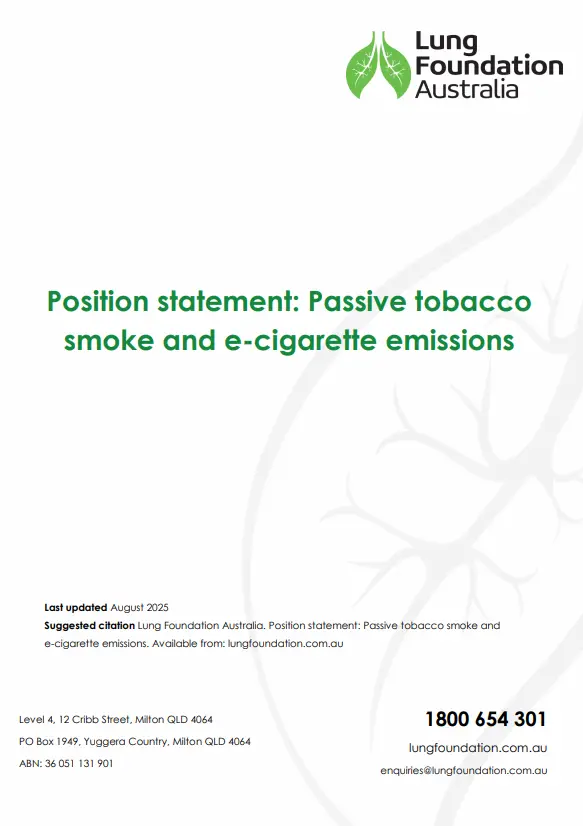Aligning with the National Preventative Health Strategy and National Tobacco Strategy, Lung Foundation Australia supports a stronger public health response that will reduce the prevalence and harms of passive or secondhand smoking in public areas.
Passive or secondhand tobacco smoke and e-cigarette emissions is the inhalation, ingestion, or absorption of smoke or emissions by individuals other than the active smoker. Secondhand and thirdhand smoke can contribute to a number of significant health harms including:
- Increased prevalence of chronic respiratory symptoms, acute respiratory illness, and middle ear disease;
- Increased severity of asthma episodes and symptoms;
- A decrease in pulmonary function;
- Increased risk for asthma, sudden infant death syndrome, lung cancer in adults, breast cancer in younger women, nasal sinus cancer, and coronary heart disease in adults.
Whilst Australia’s public health response to the reduction of passive exposure to smoke is legislated, and overtime has expanded to protect more public spaces, Lung Foundation Australia continues to advocate for stronger approaches to eliminate smoking in public places.
To address the significant public health impacts of passive smoking, Lung Foundation Australia recommends:
- Consumption of alcohol in outdoor smoking areas attached to liquor licensed venues must be prohibited and buffer zones strengthened, with the long-term aim of a full smoking ban in liquor licensed venues.
- Body corporates must be allowed to make by-laws on prohibition of smoking in outdoor areas of multi-unit housing.
- Nicotine replacement therapy and cessation medication should be free to parents and carers who smoke to improve quit rates–this would reduce the risks of passive tobacco smoke for children.
Creating supportive environments and expanding smoke-free policies are essential to reducing passive exposure and promoting cessation efforts across Australia.
Was this page helpful?
Good job! Please give your positive feedback
How could we improve this post? Please Help us.
